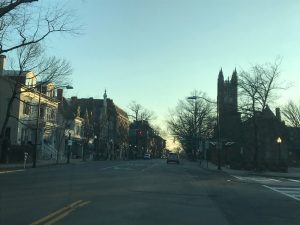 Princeton, NJ is a thriving municipality. With a population of nearly 31,000 people, there are those that love its historic nature, others who love its more modern approaches. There seems enough space for both. But several instances have been highlighted recently, indicating a need to maintain a focus on preserving historic buildings and harmonious streetscapes alongside attempts to modernize.
Princeton, NJ is a thriving municipality. With a population of nearly 31,000 people, there are those that love its historic nature, others who love its more modern approaches. There seems enough space for both. But several instances have been highlighted recently, indicating a need to maintain a focus on preserving historic buildings and harmonious streetscapes alongside attempts to modernize.
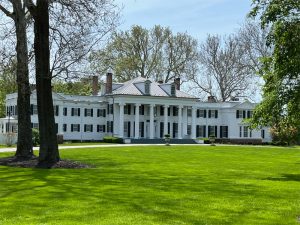
One of the most historic communities in the United States, Princeton saw its first long-term settlers arrive in the late 1600s. Throughout the next century or two, many homes and buildings were erected that still stand today. Nassau Hall (1756), Morven (1750-1800), Bainbridge House (1766), Drumthwacket (1835) and Prospect House (1851) to name a few. There are 46 buildings from the 18th century that you can find throughout Princeton, designated with green oval plaques as historic landmarks.
These buildings and others have been preserved, remaining as homes or often turned into museums and special places for gathering. To the naked eye, they are beautiful and sometimes ornate, they add character and a sense of old style to the municipality. To many residents and visitors to this community they mean even more, with historic architecture, layouts and streetscapes that allow us to be present while learning about and maintaining a connection to our past.
“There’s something special that gives old buildings character and significance and that something special is age. It’s the patina an old building acquires over the decades and in the case of some Princeton buildings, over the centuries. That patina tells us not only something about the original buildings and why they look the way they do, but also about how they’ve changed over time,” explains Clifford Zink, an architectural historian who has worked in historic preservation for 40 years. “Kind of like looking at faces of older people. Young faces are beautiful, but when you look at the face of an older person you get to see a lot about their life and character and how time has affected them and how they’ve held up over time. Buildings convey that in a similar way.”
Zink and several others have a keen desire to ensure Princeton’s architectural history is not threatened by being altered too deeply or quite possibly, erased. Their desires are not to prevent any updates or changes, but to ensure they are managed with historic significance in mind.
“It is not about stopping development or freezing places the way they are, putting them on ice. It is a matter of saying, let’s have new development and new housing construction, but have it developed in a way that takes the neighborhood into consideration,” Zink adds.
Local architect, Cathy Knight agrees. “There’s a place for it. I’m an architect, I love new buildings, I develop all the time. There’s a lot of examples of additions I have done that are scaled for historic properties.”
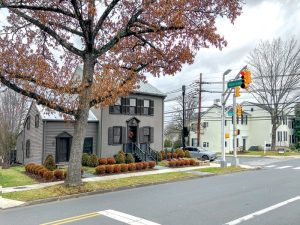
There are currently three projects that have garnered public attention with regards to maintaining historic building heights, setback limits and the nature of certain neighborhoods in Princeton. One, for which Zink and Knight are actively involved, is about development of the historic Joseph Hornor House at 344 Nassau Street (and Harrison St.) where developer Daniel Barsky has proposed an addition creating a four-story apartment building. The complexity is that an affordable housing overlay ordinance created in 2020 allows for such a structure. Critics say, however, there is regulatory conflict with regards to terms of the historic preservation guidelines set for areas including this one, known as Jugtown Historic District (which covers many structures along Nassau Street and at the intersection of and nearby Harrison Street).
“Once you lose it, you’ll never get it back. The proposal as shown will really harm the historic building on that corner and potentially we will have other buildings on that corner harmed as well. Once one goes, all could go and that would be a real loss for the town, it’s such an iconic intersection,” Knight notes.
There were two meetings earlier this week, held by Princeton’s Historic Preservation Commission to discuss Barsky’s application, where Knight, Zink and others from the community shared their thoughts. They could impact a recommendation from the Commission which will be considered at the Planning Board meeting scheduled for next week.
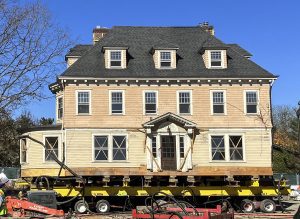 It is possible a compromise might be agreed to between the different parties involved. In 2021, Zink was a lead negotiator, working with Princeton University to save three Queen Anne Victorian houses on Prospect Street. Those working with him, to ensure the historic buildings remained, were able to get Princeton University to relocate some buildings to make it happen.
It is possible a compromise might be agreed to between the different parties involved. In 2021, Zink was a lead negotiator, working with Princeton University to save three Queen Anne Victorian houses on Prospect Street. Those working with him, to ensure the historic buildings remained, were able to get Princeton University to relocate some buildings to make it happen.
Princeton, as a municipality, has been dedicated to historic preservation. Its historic district ordinance states “Princeton contains numerous buildings, archeological sites, and areas of special character and special historic and aesthetic value; that these buildings, archeological sites, and areas of the municipality reflect elements of the cultural, social, economic, and architectural history of the community; and that preservation and enhancement of such elements are required in the interest of the health, prosperity, and welfare of the municipality as well as the surrounding region.”
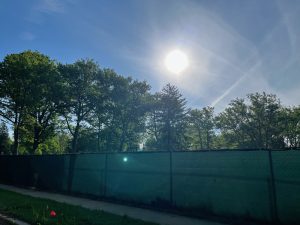 While that ordinance holds weight, so do other ordinances made by Council. For example, another matter under contention in town is with regards to property in and near the Mercer Hill Historic District (MHHD), which falls in and around Princeton University and Princeton Theological Seminary (PTS). This area is home to many historic homes and structures, including The Barracks, on Edgehill Street, dating back to c.1696. Today’s concern is about what will go up at the former home to the Tennent-Roberts-Whiteley site at PTS (now surrounded by green fencing) and how the latest proposed development could be done to preserve the feel of the neighborhood.
While that ordinance holds weight, so do other ordinances made by Council. For example, another matter under contention in town is with regards to property in and near the Mercer Hill Historic District (MHHD), which falls in and around Princeton University and Princeton Theological Seminary (PTS). This area is home to many historic homes and structures, including The Barracks, on Edgehill Street, dating back to c.1696. Today’s concern is about what will go up at the former home to the Tennent-Roberts-Whiteley site at PTS (now surrounded by green fencing) and how the latest proposed development could be done to preserve the feel of the neighborhood.
“We’re very concerned about it. I echo every piece that’s been written about that. It would tower over the neighborhood, take up most of the green space, and there are major traffic concerns that one road would come and go from 206 [Stockton Street],” says MHHD resident, Jane MacLennan. “As one person said, the top floors of that design can see into all of our houses! And there’s a concern about air pollution, noise pollution, light pollution from that new construction.”
Beyond a desire to maintain a preserved look, there lays another conflict in local law that nearby residents here are contesting. MHHD, as a declared historic district, is guided by the historic preservation ordinance, yet in 2018, the Tennent-Roberts-Whiteley properties were declared “Area in Need of Development,” allowing for a multi-family development that does not have the same restrictions as the rest of the historic area would require. Princeton held several community meetings last year, including where the last concept plan from the developer was revealed, which some were pleased with while many others continued to have concerns. The planning process is still underway.
“Nobody is saying in any of these instances ‘not in my back yard’ but rather ‘yes, that would be fine in my back yard, but let’s have it built in a way that adds to what is here’ as opposed to what is being out of harmony with what’s here,” clarifies Zink. “It’s not an isolated consideration among people who live in Princeton. We’ve seen it 3 times now and I think it’s going to keep coming up because there’s going to be more and more development pressure in Princeton.”
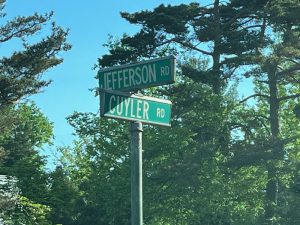 Another instance, which for a short while was receiving pushback from an anonymous group that called itself “Save our Streetscapes” (whose website is no longer active) was not so much about historic structures as it was about streetscape preservation. This one, at 479 Jefferson Road, involves a developer’s desire to build two homes on the lot where one former house sat. Developers initially sought a variance to allow for smaller setback limits for each. Last month the builder adjusted one of the setbacks to within existing requirements, while the other remains slightly smaller. One of the homes is also designed to not face Jefferson Road (its front would be on the adjacent Cuyler instead), which is also a variation from other homes in that area. Historically, this segment of Jefferson Road has had a consistent look, and these streetscape changes are an additional layer in the town-wide desire by many to maintain certain looks for certain neighborhoods. This issue was scheduled for discussion at this Thursday’s Planning Board meeting but is now listed as postponed on the municipal calendar.
Another instance, which for a short while was receiving pushback from an anonymous group that called itself “Save our Streetscapes” (whose website is no longer active) was not so much about historic structures as it was about streetscape preservation. This one, at 479 Jefferson Road, involves a developer’s desire to build two homes on the lot where one former house sat. Developers initially sought a variance to allow for smaller setback limits for each. Last month the builder adjusted one of the setbacks to within existing requirements, while the other remains slightly smaller. One of the homes is also designed to not face Jefferson Road (its front would be on the adjacent Cuyler instead), which is also a variation from other homes in that area. Historically, this segment of Jefferson Road has had a consistent look, and these streetscape changes are an additional layer in the town-wide desire by many to maintain certain looks for certain neighborhoods. This issue was scheduled for discussion at this Thursday’s Planning Board meeting but is now listed as postponed on the municipal calendar.
Ordinances are in place to require changes are done within approved parameters, and that various aspects of the area’s surroundings are properly considered. As each of these instances play out, there are checks and balances in place to ensure that the municipality’s, developer’s and local resident’s needs are all weighed. Historic Preservation Committee and Planning Board members take it all into consideration before any plans are approved and permits authorized. It is all a process, but one that many hope will allow for modern and necessary changes while preserving the heritage of Princeton.

Lisa Jacknow spent years working in national and local news in and around New York City before moving to Princeton. Working as both a TV producer and news reporter, Lisa came to this area to focus on the local news of Mercer County at WZBN-TV. In recent years, she got immersed in the Princeton community by serving leadership roles at local schools in addition to volunteering for other local non-profits. In her free time, Lisa loves to spend time with her family, play tennis, sing and play the piano. A graduate of the S. I. Newhouse School of Public Communications at Syracuse University, Lisa was raised just north of Boston, Massachusetts but has lived in the tri-state area since college. She is excited to be Editor and head writer for Princeton Perspectives!
